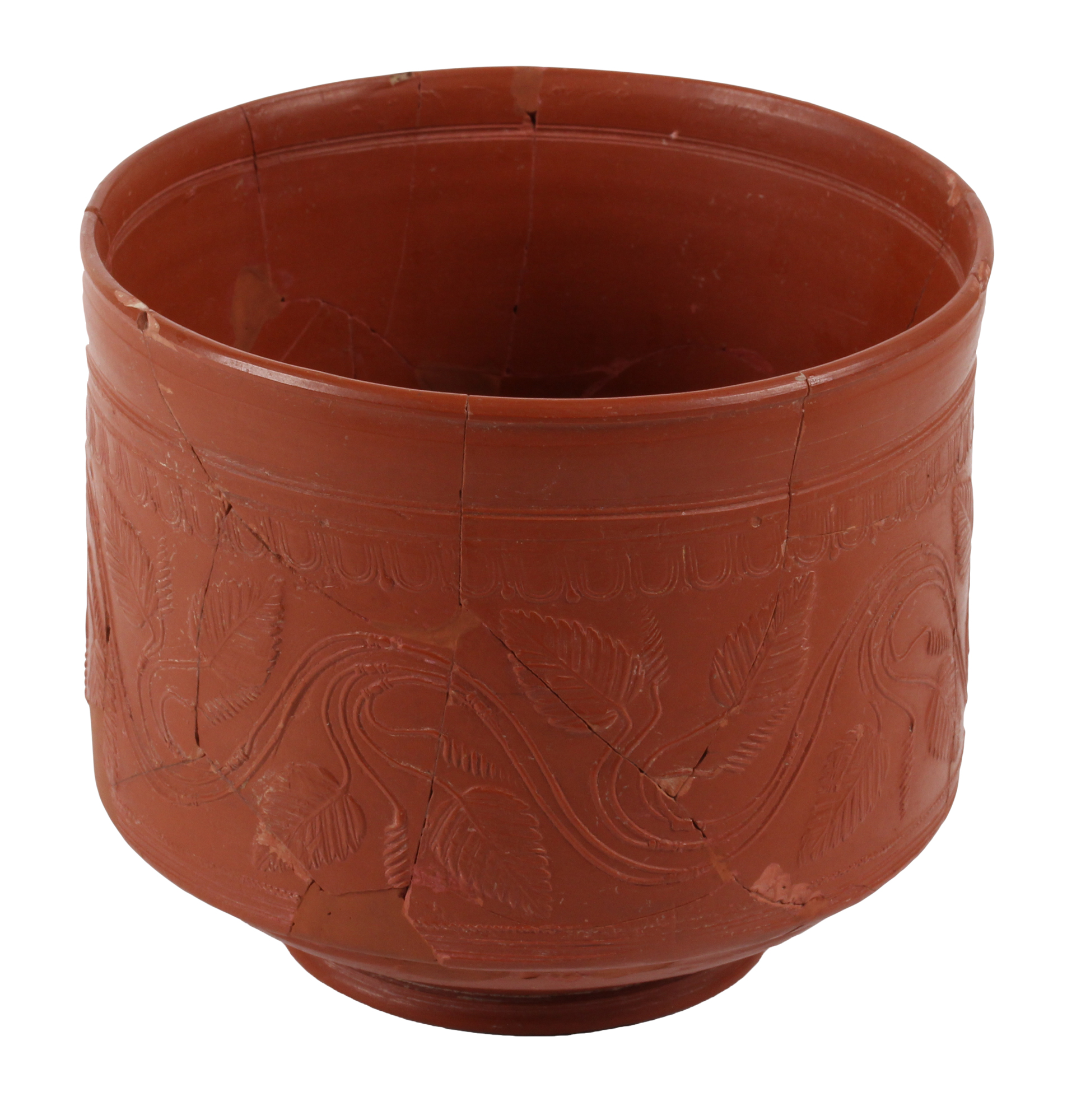Design E3
Terra sigillata/ decorated clay ware was first produced at Arezzo (Etruria) in the first century BC. Later it was made available in the whole Roman Empire. Standardized pieces of tableware of a nice glossy red, sometimes decorated with stylus drawn motives, were manufactured by moulding or at the potter’s wheel on a very large scale. Archaeologists use the term “industry” to designate this mass production. In Gaul, over the first three centuries AD, the main workshops moved to the centre and later to the east of the country. In the first century, the Graufesenque workshops, situated near the present town of Millau (Aveyron) enjoyed a monopoly. Over the next two centuries, Graufesenque was progressively overshadowed by Lezoux (near Clermont-Ferrand, Puy de Dôme). Thanks to terra sigillata/decorated clay ware, the middle class could enjoy luxury tableware which imitated the prestigious bronze or silver dishes, plates and cups of the elite.

Coupe sigillée, terre cuite, Ier-IIe siècles, provenance site de la Graufesenque. Coll. Musée de Millau et des Grands Causses

